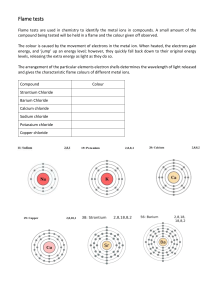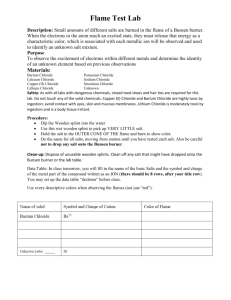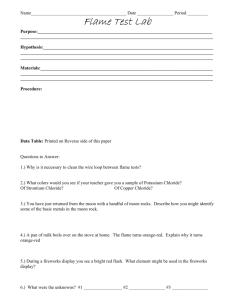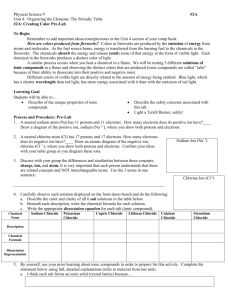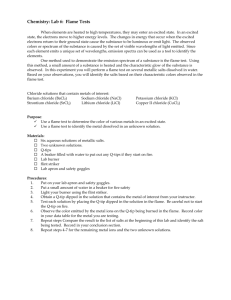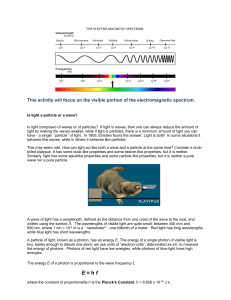Flame Test Lab: Identify Metal Ions by Color
advertisement
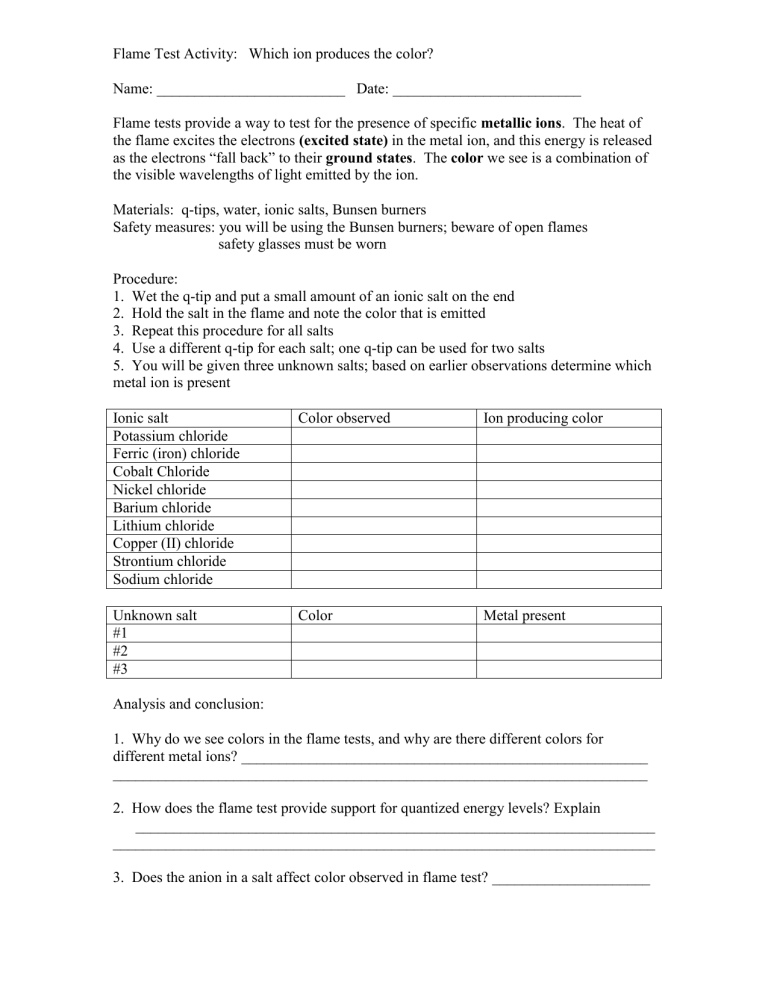
Flame Test Activity: Which ion produces the color? Name: _________________________ Date: _________________________ Flame tests provide a way to test for the presence of specific metallic ions. The heat of the flame excites the electrons (excited state) in the metal ion, and this energy is released as the electrons “fall back” to their ground states. The color we see is a combination of the visible wavelengths of light emitted by the ion. Materials: q-tips, water, ionic salts, Bunsen burners Safety measures: you will be using the Bunsen burners; beware of open flames safety glasses must be worn Procedure: 1. Wet the q-tip and put a small amount of an ionic salt on the end 2. Hold the salt in the flame and note the color that is emitted 3. Repeat this procedure for all salts 4. Use a different q-tip for each salt; one q-tip can be used for two salts 5. You will be given three unknown salts; based on earlier observations determine which metal ion is present Ionic salt Potassium chloride Ferric (iron) chloride Cobalt Chloride Nickel chloride Barium chloride Lithium chloride Copper (II) chloride Strontium chloride Sodium chloride Color observed Ion producing color Unknown salt #1 #2 #3 Color Metal present Analysis and conclusion: 1. Why do we see colors in the flame tests, and why are there different colors for different metal ions? ______________________________________________________ _______________________________________________________________________ 2. How does the flame test provide support for quantized energy levels? Explain _____________________________________________________________________ ________________________________________________________________________ 3. Does the anion in a salt affect color observed in flame test? _____________________ Flame Test Activity: Which ion produces the color? Name: _________________________ Date: _________________________
